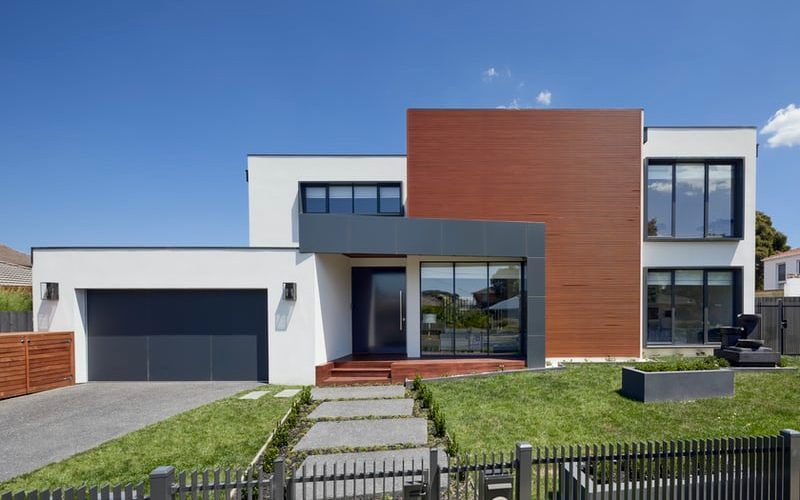The latest CoreLogic data shows Australia’s residential property values peaked in October, remained steady in November, and slipped in December.
The monthly decline in the Home Value Index was also enough to drag the quarterly change into negative territory, also down -0.1%.
It ends a period of growth between February 2023 and October 2024 when home values continued to rise despite high interest rates, cost-of-living pressures, and reduced borrowing capacity.
CoreLogic research director Tim Lawless said the December decline is no surprise.
“This result represents the housing market catching up with the reality of market dynamics,” he said.
“Growth in housing values has been consistently weaking through the second half of the year, as affordability constraints weighed on buyer demand and advertised supply levels trended higher.”
Home Value Index results as at 31 December 2024 (change in dwelling values)
| Month | Quarter | Annual | Total return | Median value | |
| Sydney | -0.6% | -1.4% | 2.3% | 5.5% | $1,191,955 |
| Melbourne | -0.7% | -1.8% | -3.0% | 0.7% | $774,093 |
| Brisbane | 0.5% | 1.3% | 11.2% | 15.6% | $890,746 |
| Adelaide | 0.6% | 2.1% | 13.1% | 17.3% | $814,430 |
| Perth | 0.7% | 1.9% | 19.1% | 24.5% | $813,016 |
| Hobart | -0.5% | 0.0% | -0.6% | 3.7% | $651,043 |
| Darwin | 0.4% | 0.6% | 0.8% | 7.4% | $496,871 |
| Canberra | -0.5% | -0.3% | -0.4% | 3.8% | $844,277 |
| Combined capitals | -0.2% | -0.5% | 4.5% | 8.3% | $896,372 |
| Combined regional | 0.2% | 1.0% | 6.0% | 10.6% | $657,652 |
| National | -0.1% | -0.1% | 4.9% | 8.9% | $814,837 |
Source: CoreLogic Home Value Index, released 2 January 2025
Home values still end higher for 2024
Over the first half of the year, national home values continued to rise by 4.1% but slowed to just 0.7% through the second half, with five of the eight capital cities seeing a decline in values between July and December.
Despite that, home values finished the year up 4.9%, adding around $38,000 to the median value of a home.
Melbourne led the decline in home values for 2024 at -3%, followed by Hobart (-0.6%) and ACT (-0.4%).
But the mid-sized capitals headed the other way with Perth home values jumping 19.1% over the year, with Adelaide up 13.1% and Brisbane values coming in 11.2% higher.
CoreLogic analysis shows these markets have also passed their peak growth rates.
Perth has eased from its cyclical peak of 24.7% over the year ending July, while Adelaide’s annual growth slowed from its 14.6% peak in August.
Brisbane’s annual gains peaked in April at 17%.
See also:
Hot Sydney suburbs to watch in 2025
Melbourne suburbs to watch in 2025: expert forecasts
Brisbane suburbs to watch in 2025
Perth suburbs to watch in 2025
2025 property outlook: Adelaide suburbs to watch
Hobart suburbs to watch in 2025
Canberra suburbs to watch in 2025
Adelaide steams on
The December figures also marked a change in the quarterly capital city rankings with Adelaide overtaking Perth as the strongest growth market.
Adelaide values were up 2.1% in the December quarter, compared to Perth with a 1.9% rise in values and Brisbane 1.3%.
Mr Lawless said the rise in Adelaide continues to be driven by “extremely low” advertised stock levels.
“[This] has continued to support strong growth conditions across Adelaide, with stock levels tracking -34% below the previous five-year average in mid-December,” he said.
“Perth, on the other hand, has seen a clear lift in advertised supply which has provided buyers with more choice and less urgency, supporting a sharper slowdown in value growth relative to Adelaide.”
Most affordable housing sees highest growth
Once again, it was homes in the lowest quartile of prices that recorded the highest growth rates.
Across the combined capital cities, housing values of the least-expensive quartile were up 9.8% in 2024 while homes in the most expensive quartile rose by only 1.5%.
Mr Lawless said as affordability constraints and borrowing capacity tightened, buyers turned to lower-priced homes which supported stronger growth in those markets.
Regional markets also higher
Across Australia, regional markets saw higher annual growth (6%) than the combined capital cities (4.5%).
Again, regional Western Australia (+16.1%), South Australia (+12.5%), and Queensland (+10%) dominated growth.
Only regional Victoria and Northern Territory recorded ‘rest of state’ falls outside of their respective capital cities – Victoria down -2.7% and NT down -4.7%.
See also:
Newcastle suburbs to watch in 2025
Central Coast suburbs to watch in 2025
Gold Coast suburbs to watch in 2025
Sunshine Coast suburbs to watch in 2025
Welcome news for renters
Rental markets also finished the year on a softer note with the CoreLogic national rent index up a subdued 0.1% for the month and 0.4% higher for the December quarter.
This was the smallest December quarter rise in rents since 2018.
Rents grew 4.8% over the calendar year, also the lowest annual change since the 12 months ending March 2021.
However, the yearly change in rents still remains more than double the pre-pandemic decade average of 2% growth per year.
Mr Lawless said the slowdown in rental growth reflects a reduction in net overseas migration, larger capital city households, and continued rent affordability challenges.
Rental growth is expected to remain modest in 2025 as overseas migration returns to more normal levels and average household sizes trend higher towards pre-COVID levels.
What’s ahead for 2025?
Although CoreLogic analysis shows the framework is set for a “soft start” to 2025, Australia could likely see another year of multi-speed conditions with a modest rebound in value growth once interest rates start coming down.
According to CoreLogic, the key trends to watch in the coming year will be a reduction in the cash rate, any changes to the serviceability buffer, a further slowdown in net migration, the ongoing shortfall in newly built housing, and some potential improvements in home affordability.
CoreLogic notes financial markets are now fully pricing in a 25-point cut to the cash rate by April with 77 basis points of further cuts through the 2025 calendar year.
Advertisement
Buying a home or looking to refinance? The table below features home loans with some of the lowest interest rates on the market for owner occupiers.
| Lender | Home Loan | Interest Rate | Comparison Rate* | Monthly Repayment | Repayment type | Rate Type | Offset | Redraw | Ongoing Fees | Upfront Fees | Max LVR | Lump Sum Repayment | Additional Repayments | Split Loan Option | Tags | Row Tags | Features | Link | Compare | Promoted Product | Disclosure |
|---|---|---|---|---|---|---|---|---|---|---|---|---|---|---|---|---|---|---|---|---|---|
5.79% p.a. | 5.83% p.a. | $2,931 | Principal & Interest | Variable | $0 | $530 | 90% |
| Promoted | Disclosure | |||||||||||
5.74% p.a. | 5.65% p.a. | $2,915 | Principal & Interest | Variable | $0 | $0 | 80% |
| Promoted | Disclosure | |||||||||||
5.84% p.a. | 6.08% p.a. | $2,947 | Principal & Interest | Variable | $250 | $250 | 60% |
| Promoted | Disclosure |
Image by Raunaq Sachdev via Pexels

Ready, Set, Buy!
Learn everything you need to know about buying property – from choosing the right property and home loan, to the purchasing process, tips to save money and more!
With bonus Q&A sheet and Crossword!






 Aaron Bell
Aaron Bell
 Harry O'Sullivan
Harry O'Sullivan













